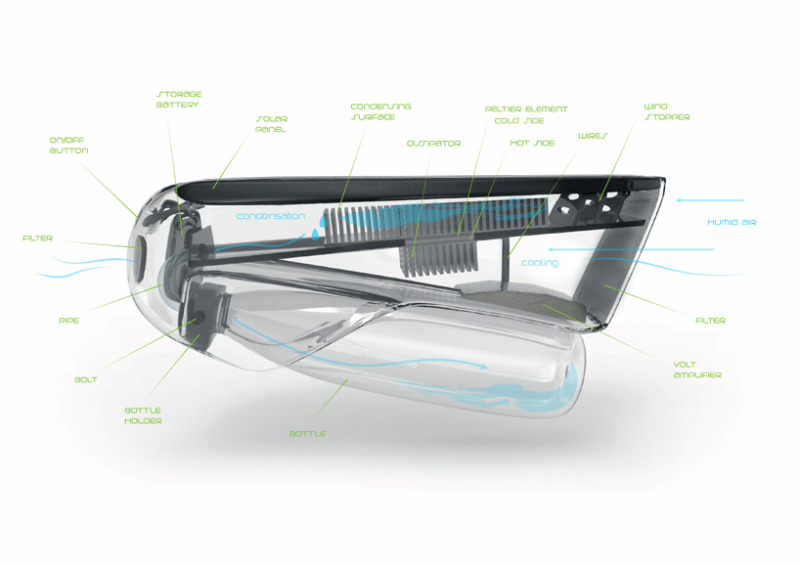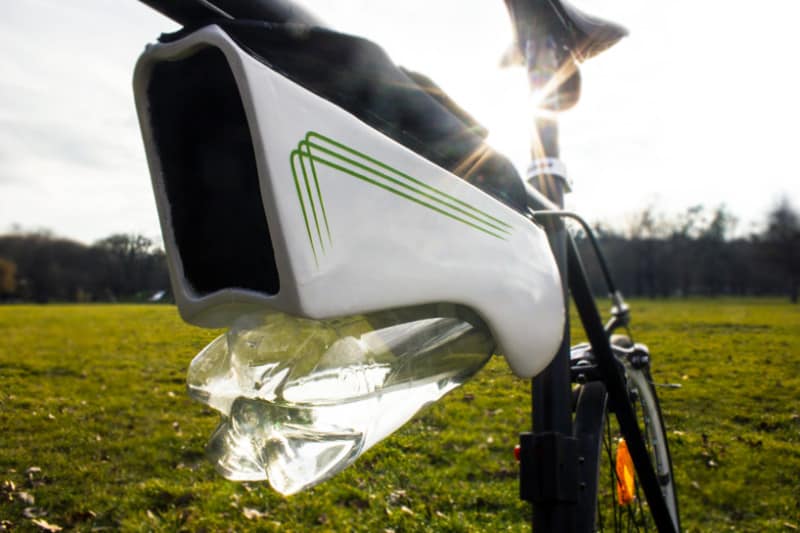
This device collects moisture from the air and turns it into H20, filling the attached bottle with drinkable water while you cycle.
Before embarking upon a long ride, many cyclists are sure to fill up their water bottle and place it in their bike’s holder. But what if while you cycle, a device could be pulling drinkable water from the air? It may sound too good to be true, but it is, in fact, a reality.
Fontus, a device designed by Austrian Kristof Retezár, collects moisture from the air and fills an attached water bottle with clean, drinkable water.
The device, powered by solar cells, can collect about half a liter of aqua with an hour’s worth of cycling and the correct weather conditions.
How does it work? The solar-powered cooler and the speed of the air traveling through the device while biking condenses the moisture in the air. When moist air enters the upper chamber (shown at the top right of the diagram below), it is slowed by a series of barriers which give the air the time it needs to release its water molecules.
Once properly cooled, the molecules can then turn back into liquid water. Harvested H20 then flows down a tube into the bottle, where it is stored for consumption. Every kind of PET 0.5I bottle fits.
Retezár is confident his invention works and believes it will come in handy for bikers who don’t have much spare room or interest in making pit stops.
“When powered by electricity, the upper side cools down and the bottom side gets hot. The more you cool the hot side down, the colder the upper side will get. Consequently, these two sides are separated and isolated from each other,” says Retezár.
Retezár said, “My goal was to create a small, compact and self-sufficient device able to absorb humid air, separate water molecules from air molecules and store water in liquid form in a bottle.”
While there are still some technical issues that need to be worked as they limit the device’s usefulness, it is still an intriguing invention likely to appeal to many bike enthusiasts. At present, Fontus produces only about a drop of water per minute, making it hard for cycling on a hot and humid day. It will also likely be a difficult innovation to utilize in polluted cities, as water would be rendered undrinkable.
Still, supporters of Fontus hope Retezár finds success so he is able to further refine and develop the device.
Source(s):







The next step is to filter the water. Water just out of the air may not be safe in some cities.
where can we buy this?